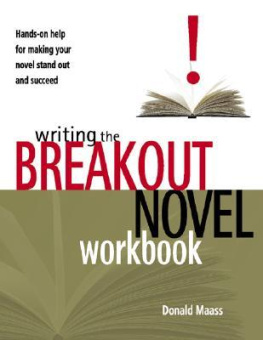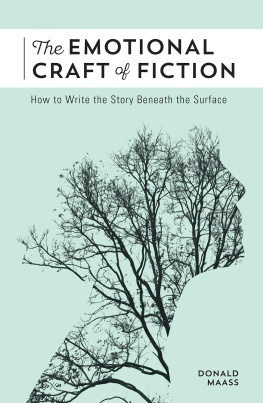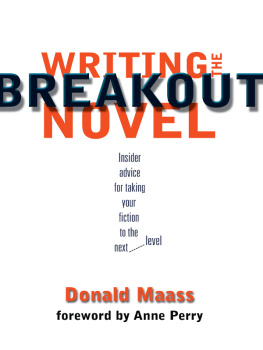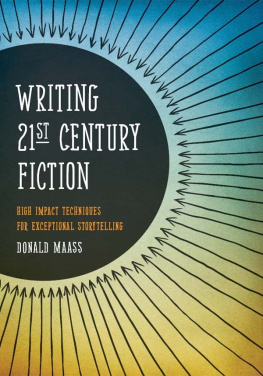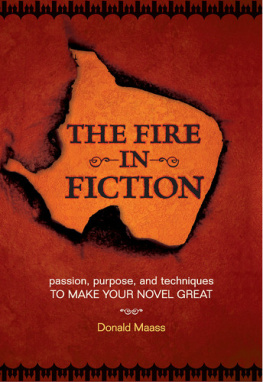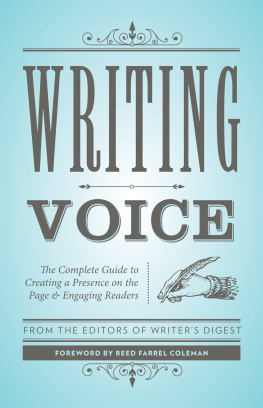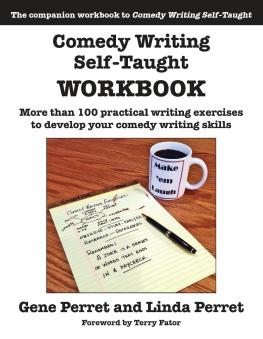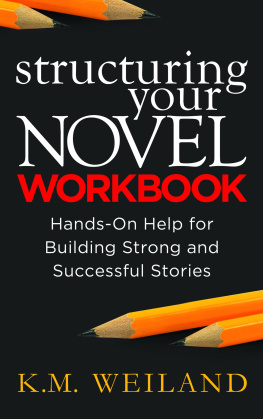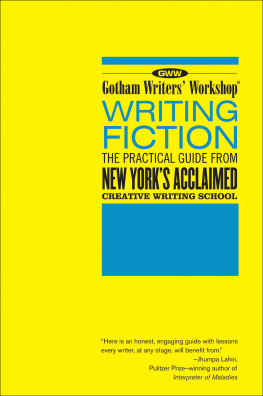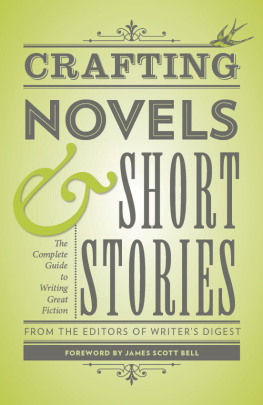Table of Contents
Introduction
Part I: Character Development
From Protagonist to Hero
Exercise: Adding Heroic Qualities
Multidimensional Characters
Exercise: Opening Extra Character Dimensions .
Inner Conflict
Exercise: Creating Inner Conflict
Larger-Than-Life Character Qualities
Exercise: Creating Larger-Than-Life Qualities
Heightening Larger-Than-Life Qualities
Exercise: Adjusting the Volume
Character Turnabouts and Surprises
Exercise: Reversing Motives
Personal Stakes
Exercise: Defining Personal Stakes
Ultimate Stakes
Exercise: Capturing the Irrevocable Commitment
Exposition
Exercise: Deepening Exposition
10 Creating Secondary Characters
Exercise: Secondary Character Development
11 Antagonists
Exercise: Developing the Antagonist
Exercise: The Antagonist's Outline
12 Enriching Your Cast
Exercise: Combining Roles
Part II: Plot Development
13 Public Stakes
Exercise: Raising Public Stakes
Complications
Exercise: Making Complications Active
15 Plot Layers
Exercise: Building Plot Layers
16 Weaving a Story
Exercise: Weaving Plot Layers Together
17 Subplots
Exercise: Adding Subplots
18 Turning Points
Exercise: Heightening Turning Points
19 The Inner Journey
Exercise: Inner Turning Points
20 High Moments
Exercise: Creating High Moments
21 Bridging Conflict
Exercise: Developing Bridging Conflict
22 Low Tension Part I: The Problem With Tea
Exercise: Brewing Tension
23 Low Tension Part II: Burdensome Backstory
Exercise: Delaying Backstory
24 Low Tension Part III: Tension on Every Page
Exercise: Adding Tension to Every Page
Part III: General Story Techniques
25 First Lines/Last Lines
Exercise: Enhancing First and Last Lines
26 Moments in Time
Exercise: Freezing Moments in Time
27 Inner Change
Exercise: Measuring Inner Change
28 Setting
Exercise: The Psychology of Place
29 Point of View
Exercise: Strengthening Point of View
30 Character Delineation
Exercise: Improving Character Delineation
Theme
Exercise: Alternate Endings
Exercise: The Larger Problem
Exercise: Same Problem, Other Characters Exercise: Making the Antagonist's Case
Symbols
Exercise: Creating Symbols
Brainstorming
Exercise: Developing Brainstorming Skills
The Pitch
Exercise: Constructing the Pitch
Appendixes
Appendix A: Outlining Your Novel
Appendix B: Follow-up Work Checklist
Introduction
For twenty-five years I have watched book publishing change. Conglomeration has narrowed the number of major North American publishing corporations to five. Best-seller syndrome and bottom-line thinking are more prevalent than ever. In most houses the marketing department reigns supreme, yet for all but a handful of novels promotional budgets are nil.
As profound as these changes have been, there have been even greater changes in bookselling. The number of independent bookstores has plunged. The chains have risen, only to surrender market share to online bookselling and wholesale clubs. The consolidation of mass-market paperback distributors has halved, and halved again, the typical sale of a rack-sized paperback. Backlist cedes ever more ground to frontlist.
As a literary agent who specializes in developing fiction careers, however, I believe there is one change that has more profoundly afflicted fiction writers than any other: computerized inventory tracking. By-the-numbers ordering by booksellers has turned recent sales history into the novelist's fate. But when you cannot ship more than the net sales on your last title, how can you grow? This catch-22 has thrown hundreds, possibly thousands, of fiction careers into crisis. An equal number have ended almost as soon as they were born.
Despite that gloomy picture, I am still in the business, happier, more hopeful, and more prosperous than I've ever been. Why? Because a few years ago I looked around and realized that many novelists are getting aheadway aheadeven in this ugly publishing environment. Better still, an examination of their work showed me the reasons for their success; and these reasons are techniques that any novelist can use.
I published the results of my study in 2001 in Writing the Breakout Novel, a book that has been praised to me in person, on Web sites and in hundreds of e-mails and letters. Authors' groups have debated its principles. It is required reading in a number of fiction courses. I also have used what I learned in preparing that book in my developmental work with my own clients. The results have been dramatic. Stalled careers have been turned around, agency revenue is way up, and many clients tell me that they are writing with new joy.
Even better, I have found that the principles in Writing the Breakout Novel can be taught. My first workshop was created for the Pacific Northwest Writers Association's annual conference in the summer of 2000.1 had just turned in the manuscript to my publisher. On the plane to Seattle I pulled out a yellow legal pad and worked up a dozen writing exercises that I thought would help writers see how to apply the techniques discussed in the book.
The positive feedback I received on that workshop was overwhelming. I began to lead the workshop at other conferences, expanded it, and eventually began to offer weekend-long Writing the Breakout Novel workshops in cities around the country. Participants are required to bring with them the manuscript of a novel or novel-in-progress. At the end of the workshop I ask how many partici-
pants will go home and devote months more effort to deepening their novels. Each time, every hand in the room goes up, often with rueful groans.
Writing a breakout novel is the hardest work you will ever do. But it can by done, and done by anyone with basic fiction writing skills and the patience and determination to take his fiction all the way to the highest level of achievement.
Writing the Breakout Novel Workbook includes all of the writing exercises that I lead in the Writing the Breakout Novel workshops. On the following pages you will learn how to read a novel like a writer, understanding the technique and motivation behind every choice an author makes. You will find help in making your characters more memorable, adding layers of plot and weaving them together, discovering the themes hidden in your work, using time and place more effectively, and much more. There is also a first-line brainstorming session, a pitch factory, and a tension tune upprobably the most difficult yet necessary section of the book. Do not skip that one.
In addition, before each exercise, I analyze breakout fiction that you can find on bookstore shelves right now. I draw examples of the application of breakout techniques not from the classics, but from current novels. The classics have much to teach us, as do books on writing, but I believe the "new fiction" section of the bookstore is better than any textbook. It's a university all by itself. See for yourself how contemporary authors cut through our industry's malaise and, sometimes with little help from their publishers, capture the imaginationsand dollarsof editors, critics, movie producers, prize committees, and, most important, consumers. (In order to analyze these novels, I do, at times, give away a great deal of the plot.)
Not every book I examine is a New York Times best-seller, but every one is a novel by an author who has broken out; that is, who has made a dramatic leap in sales over her peers or even ahead of her own previous work. As those who have heard me speak at writers conferences know, I believe that writing the breakout novel is not about creating a publishing event, but breaking through to new, more powerful ways of story construction.
Next page
